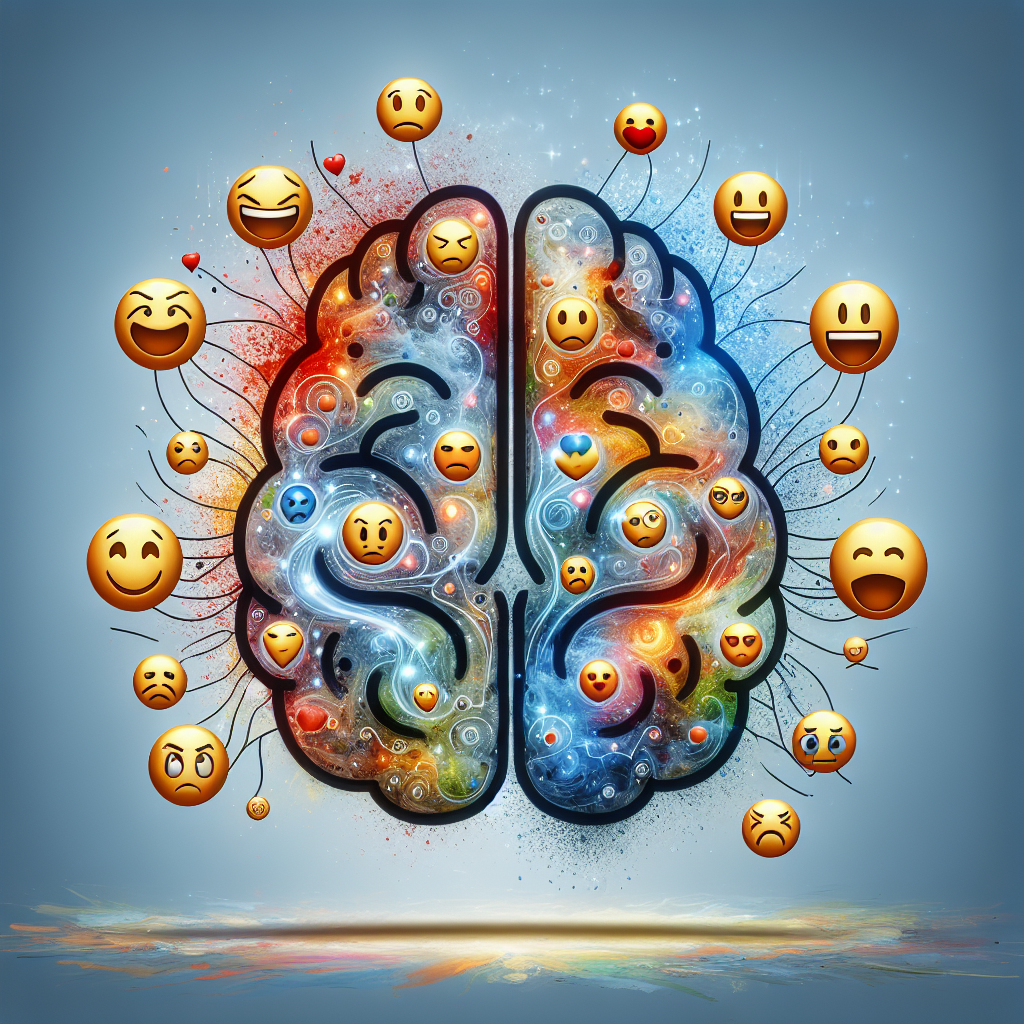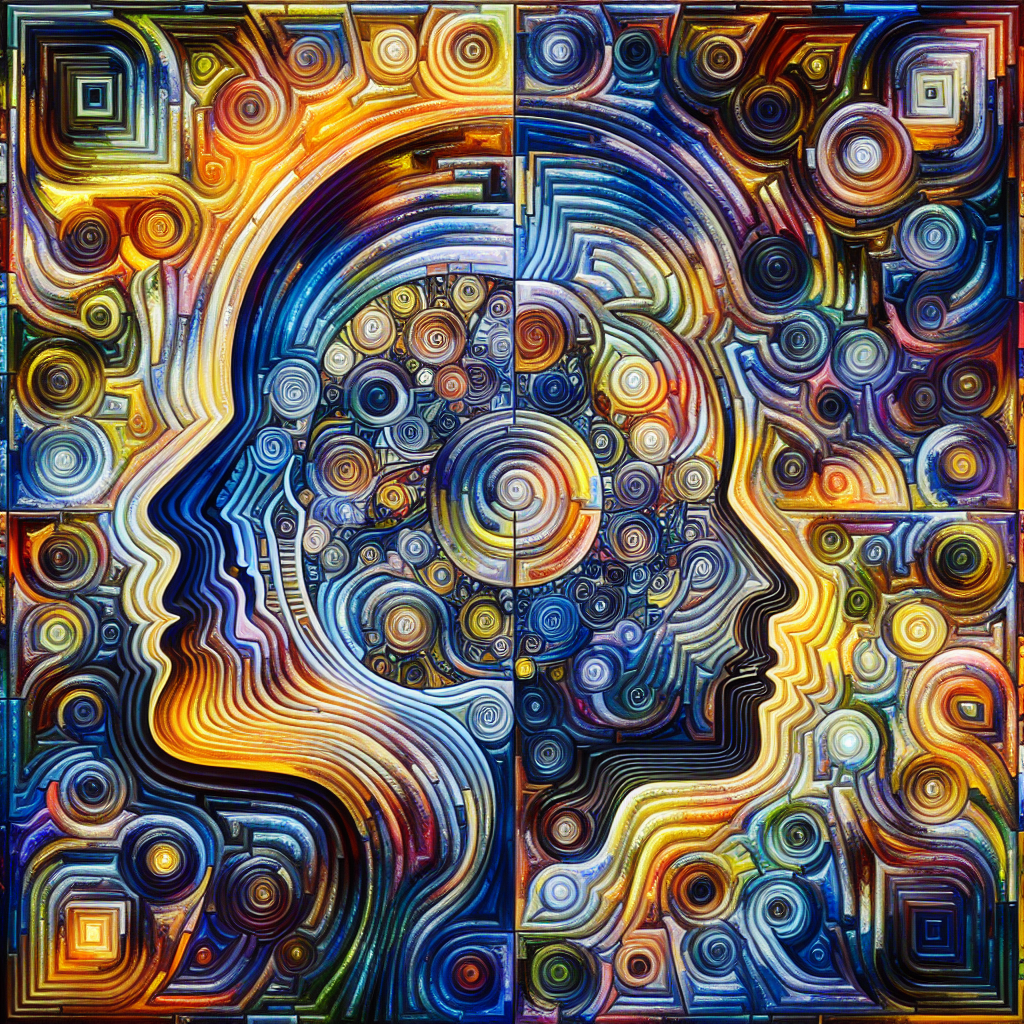Did you ever stop to wonder if there exists an exhaustive compilation of every human emotion ever experienced? From the highs of joy and excitement to the depths of sadness and despair, the spectrum of our emotions seems infinite. In this article, we explore the intriguing question of whether or not there is a definitive list of human emotions. Prepare to embark on a fascinating journey through the complex terrain of human sentiment. Get ready to discover the intricate tapestry of our emotional landscape.
The Complexity of Human Emotions
Emotions are a fundamental aspect of human existence. They shape our experiences, influence our behavior, and impact our overall well-being. Understanding the complexity of human emotions is essential for self-awareness, interpersonal relationships, and personal growth. This article will explore the different aspects of human emotions, including their categorization, functions, cultural variations, controversial nature, and their influence on various aspects of human life.
Understanding Emotions
Emotions can be defined as complex psychological and physiological states that arise in response to various stimuli or events. They involve subjective feelings, physiological changes, and behavioral expressions. Emotions are experienced and interpreted individually, and they can vary in intensity, duration, and complexity. While there is no universally agreed-upon definition of emotions, most experts agree that they encompass a range of experiences, including but not limited to happiness, sadness, anger, fear, surprise, and disgust.
Distinctive Features of Human Emotions
What sets human emotions apart from other forms of emotional experiences? Human emotions possess several distinctive features that make them unique. First, human emotions are highly subjective and personal. Each person’s emotional experience is influenced by their individual thoughts, beliefs, values, and past experiences. Second, human emotions are multifaceted, meaning they involve cognitive, physiological, and behavioral components. Third, human emotions are dynamic and can change over time or in response to different situations. Finally, human emotions are inherently social, as they play a crucial role in interpersonal interactions and social relationships.
Categorizing Human Emotions
To better understand the complex landscape of human emotions, researchers and psychologists have attempted to categorize them into different types. While various models exist, one commonly used framework classifies human emotions into four broad categories: basic emotions, secondary emotions, mixed emotions, and complex emotions.
Basic Emotions
Basic emotions are considered universal and biologically determined. They include emotions such as happiness, sadness, anger, fear, surprise, and disgust. These emotions are thought to have evolved as adaptive responses in humans to specific situations, such as the instinctive fear of danger or the automatic disgust response to potential contaminants. Basic emotions are characterized by distinct facial expressions, physiological changes, and specific behavioral tendencies.
Secondary Emotions
Secondary emotions are more complex and are believed to arise from combinations or variations of basic emotions. These emotions involve a higher level of cognitive processing and self-awareness. Examples of secondary emotions include jealousy, guilt, pride, shame, and gratitude. Unlike basic emotions, secondary emotions are influenced by social and cultural factors and can vary across individuals and societies.
Mixed Emotions
Mixed emotions refer to the experience of simultaneously feeling two or more contrasting emotions. For example, a person may feel both joy and sadness at a wedding, as they are happy for the couple but also experience nostalgia or loss. Mixed emotions are often seen in situations where there are conflicting or ambiguous feelings and can lead to a range of complex emotional experiences.
Complex Emotions
Complex emotions are characterized by their nuanced and multifaceted nature. These emotions often involve a deeper level of cognitive processing, introspection, and reflection. Examples of complex emotions include love, awe, admiration, and empathy. Complex emotions are deeply intertwined with one’s values, beliefs, and personal experiences and can be influenced by cultural, social, and environmental factors.
The Function of Human Emotions
Emotions serve various important functions in the human experience. They have evolved over time to fulfill specific adaptive purposes, influence decision-making processes, and shape social interactions.
Evolutionary Purposes
Emotions have played a crucial role in human evolution as an adaptive mechanism. For example, fear and anger would have helped our ancestors respond to threats and protect themselves. Happiness and joy are believed to reinforce positive social bonds and encourage communal behaviors. The evolutionary purpose of emotions is to promote survival, reproduction, and overall well-being.
Emotions and Decision Making
Emotions play a significant role in the decision-making process. They provide individuals with valuable information about their environment, guide their evaluations and judgments, and contribute to the formation of preferences and choices. Emotions can influence decision-making through both intuitive and deliberate processes, shaping our attitudes, goals, and motivations.
Social Functions of Emotions
Emotions are inherently social in nature and contribute to interpersonal communication, social bonding, and social cohesion. Facial expressions, vocal tones, and body language associated with specific emotions facilitate non-verbal communication and help convey our inner states to others. Emotions also play a crucial role in empathy, compassion, and the ability to understand and respond to the emotions of others, fostering meaningful social connections.
Existing Lists of Human Emotions
Given the vast array of emotional experiences, researchers have attempted to create comprehensive lists of human emotions. However, constructing a definitive list is challenging due to the complexities and subjectivity of emotions. Nevertheless, several theoretical frameworks and research studies have provided valuable insights into the nature and categorization of human emotions.
Theoretical Frameworks
Prominent psychological theories of emotions, such as the basic emotions model proposed by Paul Ekman and the circumplex model, attempt to classify and describe different emotional states. These frameworks consider a wide range of emotions, their components, and their interrelationships. While these theories provide valuable insights, many researchers emphasize the need for a more comprehensive and culturally inclusive understanding of emotions.
Cultural Variations
Cultural factors play a significant role in shaping our emotional experiences. Different cultures may prioritize or emphasize certain emotions, leading to variations in emotional expression, interpretation, and experience. For example, individualistic cultures may prioritize personal happiness and individual achievement, while collectivist cultures may place more emphasis on the well-being and harmony of the group. Thus, cultural variations must be considered when creating lists of human emotions.
Current Challenges
Creating a comprehensive list of human emotions is an ongoing and complex process. Current challenges include the subjectivity and individual differences in emotional experiences, cultural influences on emotional expression, and the evolving nature of emotions in response to social and technological advancements. Researchers continue to explore these challenges through interdisciplinary collaborations and innovative research methods.

Controversial Emotions: Are They Universal?
The question of whether emotions are universal or influenced by culture has been a topic of debate and research. Some scholars argue that certain emotions are universal and biologically determined, while others propose that emotions are shaped by social and cultural factors.
Debate on Universality
One perspective suggests that some emotions, such as happiness, fear, or anger, are universally recognized and experienced across different cultures. This theory emphasizes the biological underpinnings of emotions and the existence of universal facial expressions associated with specific emotions. Research studies conducted by Paul Ekman and his colleagues have provided evidence supporting this view.
Cultural Differences in Emotional Expressions
On the other hand, proponents of the cultural constructionist approach argue that emotional experiences are heavily influenced by cultural norms, values, and social contexts. They argue that emotional expressions and their interpretations can vary significantly between cultures. For example, while smiling is commonly associated with happiness in Western cultures, it can also be a sign of politeness, embarrassment, or even deception in other cultures.
Universal Emotional Experiences
While cultural variations in emotional expressions are evident, there is growing evidence suggesting that certain emotional experiences may indeed be universal. For example, studies have shown that individuals from different cultures can experience similar emotional responses to specific events, such as joy at a wedding or sadness at a funeral. These findings suggest that while emotional expressions may vary, the underlying experiences may share commonalities across cultures.
The Influence of Culture on Emotion
Culture plays a significant role in shaping the way individuals experience, express, and regulate their emotions. Emotions can be understood as social constructs, influenced by cultural norms, beliefs, and values. The following aspects highlight the influence of culture on emotions.
Emotions as Social Constructs
Emotions are not solely individual experiences but are shaped by social and cultural factors. Culture provides a framework for understanding and interpreting emotions, determining which emotions are valued or stigmatized, and defining appropriate ways to express and regulate them. Cultural beliefs and practices can shape emotional norms, influence how emotions are displayed, and contribute to emotional well-being.
Cultural Display Rules
Cultural display rules refer to the unwritten rules and norms that dictate how emotions should be expressed in a given culture. These rules can vary significantly, dictating when, where, and how emotions should be displayed or suppressed. For example, some cultures may encourage individuals to suppress negative emotions or to express anger more assertively, while other cultures may prioritize emotional openness and encourage the expression of a wide range of emotions.
Culture-Specific Emotions
While some emotions are considered universal, cultures may also have their own unique set of emotions not found or emphasized in other societies. For example, the Japanese concept of “amae” refers to the feeling of indulgence and dependence on someone else, which may not have an equivalent in Western cultures. These culture-specific emotions reflect the values, norms, and social experiences of a particular culture.

Psychological Disorders and Emotions
Emotions play a significant role in mental health and the development of psychological disorders. Emotional dysregulation is often a key feature of various mental health conditions.
Impact of Emotions on Mental Health
Emotions can significantly impact an individual’s mental health and overall well-being. Persistent negative emotions, such as chronic sadness or anxiety, can contribute to the development of mental health disorders, including depression, generalized anxiety disorder, or post-traumatic stress disorder. Emotional dysregulation can also disrupt daily functioning, affect relationships, and lead to unhealthy coping mechanisms.
Disordered Emotional States
Psychological disorders can manifest as disruptions in emotional experiences and regulation. For example, individuals with borderline personality disorder often struggle with intense and unstable emotions, experiencing extreme highs and lows. Other disorders, such as obsessive-compulsive disorder or phobias, may be characterized by excessive fear or anxiety in specific situations.
Emotional Intelligence: Beyond Basic Emotions
Emotional intelligence refers to the ability to recognize, understand, and manage one’s own emotions and the emotions of others. It goes beyond simply experiencing and expressing basic emotions.
The Role of Emotional Intelligence
Emotional intelligence plays a critical role in various aspects of human life, including personal relationships, social interactions, and professional success. Individuals with high emotional intelligence are better equipped to navigate complex emotional situations, build strong relationships, and make informed decisions. Emotional intelligence also contributes to mental well-being, resilience, and overall life satisfaction.
Components of Emotional Intelligence
Emotional intelligence can be divided into several components. These include self-awareness, self-regulation, social awareness, and relationship management. Self-awareness involves recognizing and understanding one’s own emotions and how they influence thoughts and behavior. Self-regulation refers to the ability to manage and regulate emotions in a healthy and adaptive manner. Social awareness involves recognizing and understanding the emotions of others, while relationship management focuses on effectively managing interpersonal relationships and resolving conflicts.

Emotions and Gender
Research has highlighted significant differences in the emotional experiences and expression between males and females. However, these differences are influenced by a complex interplay of biological, psychological, and sociocultural factors.
Gender Differences in Emotionality
Studies have consistently found that females tend to score higher than males on measures of empathy, emotional sensitivity, and expressiveness. Females are often more proficient at decoding non-verbal cues, recognizing and understanding emotions in others, and expressing a wider range of emotions. On the other hand, males tend to exhibit more aggression and anger, which may be influenced by biological and sociocultural factors.
Sociocultural Factors
Gender differences in emotionality are not solely determined by biological factors but are strongly influenced by sociocultural norms and expectations. Societal expectations and gender roles play a significant role in shaping how males and females are socialized to perceive and express emotions. These expectations can lead to gender disparities in emotional expression, emotional regulation strategies, and help-seeking behaviors.
The Future of Understanding Human Emotions
Advancements in emotion research have provided valuable insights into the complexity of human emotions. However, there is still much to explore and understand. As we move forward, interdisciplinary approaches and collaborations will play a crucial role in deepening our understanding of human emotions.
Advancements in Emotion Research
Advances in neuroscience, psychology, and other related fields have opened up new avenues for studying emotions. Techniques such as functional magnetic resonance imaging (fMRI) and electroencephalography (EEG) have allowed researchers to explore the neural underpinnings of emotions, providing a more comprehensive understanding of emotional processes. Additionally, the integration of computational models and artificial intelligence has contributed to advancements in emotion recognition and understanding.
Interdisciplinary Approaches
Understanding human emotions requires a multidimensional and interdisciplinary approach. Collaboration between psychologists, neuroscientists, anthropologists, sociologists, and computer scientists enables researchers to explore emotions from various angles and perspectives. By combining insights from different disciplines, we can gain a more holistic understanding of the complexity and universality of human emotions.
In conclusion, the complexity of human emotions is a fascinating and multidimensional topic. Emotions play a central role in our lives, shaping our thoughts, behaviors, relationships, and overall well-being. Understanding the diverse range of human emotions, their categorization, functions, and cultural influences, is crucial for personal growth, interpersonal communication, and psychological well-being. As we continue to uncover new insights and advancements in emotion research, we move closer towards a deeper comprehension of this fundamental aspect of the human experience.

